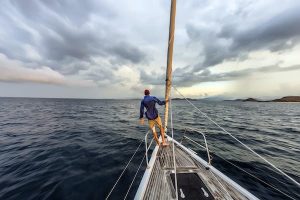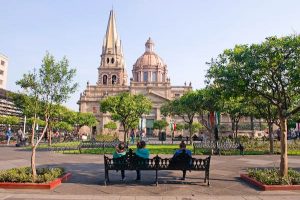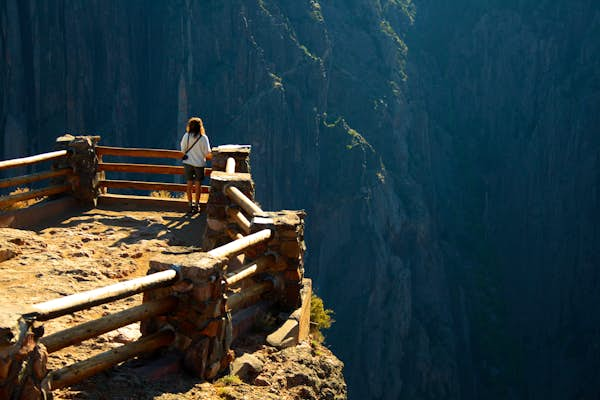
With spectacular vistas, scenic drives and opportunities to spot wildlife, geological marvels and echoes of ancient civilizations, Colorado’s national parks dazzle. Whether you’re looking to go on a short stroll with your kids or do some hardcore hiking, there’s a walk for everyone here. And did we mention the sunshine? There is 300 days a year of it.
Not surprisingly, visitor numbers grow year after year – but don’t let that deter you. Every one of Colorado’s national parks is well worth a visit.
Get trusted guidance to the world’s most breathtaking experiences delivered to your inbox weekly with our email newsletter. 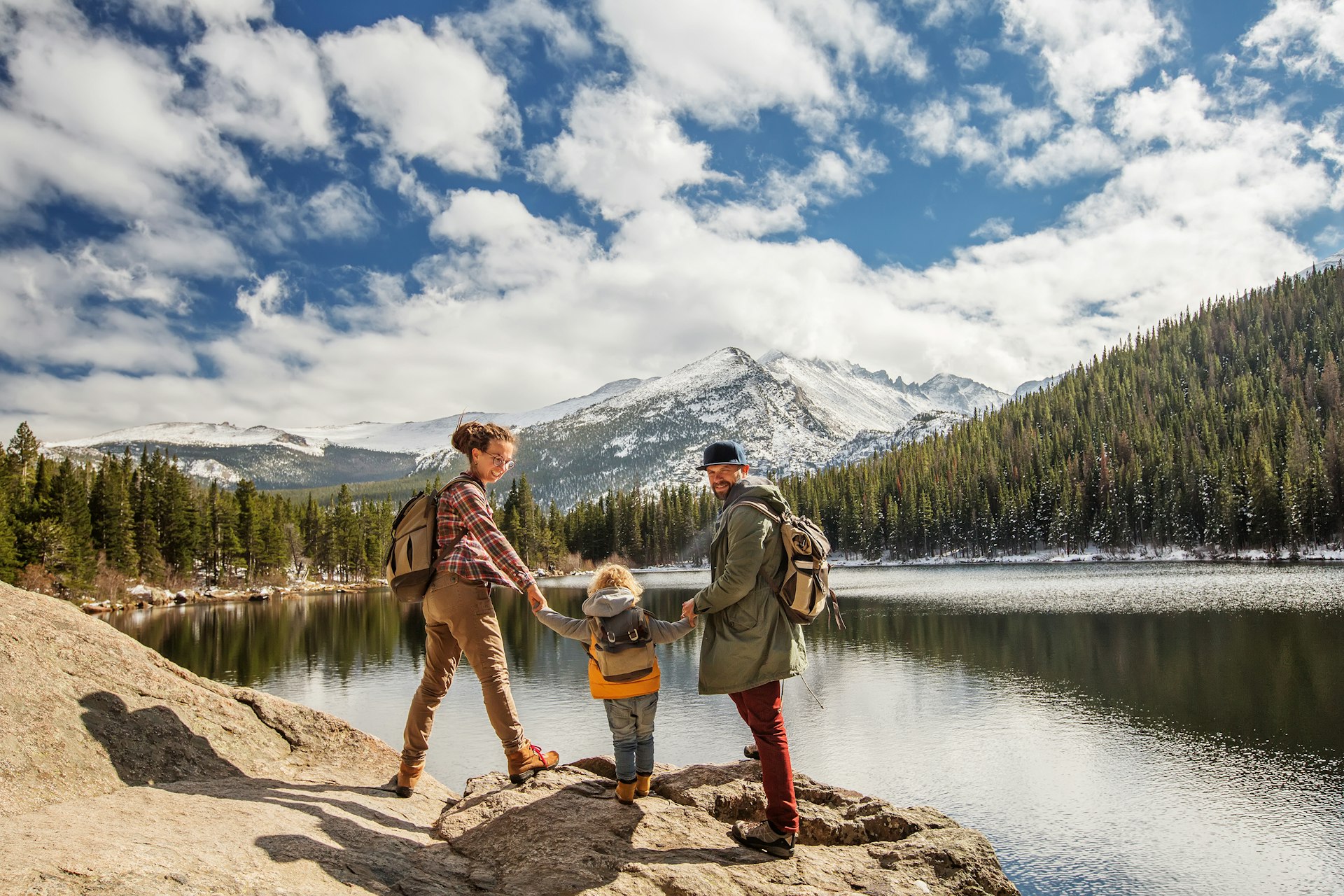 One of the most-visited national parks in the country, RMNP offers hiking trails for all levels and ages © My Good Images / Shutterstock
One of the most-visited national parks in the country, RMNP offers hiking trails for all levels and ages © My Good Images / Shutterstock
Rocky Mountain National Park has something for every visitor
With over 4.6 million visitors per year, Rocky Mountain National Park is one of the most visited national parks in the US – and with good reason. Encompassing 415 sq miles, this majestic giant contains hundreds of granite peaks and wildlife big and small.
Adventure is to be had year-round. Summertime brings shimmering alpine lakes and wildflower-filled meadows crossed with hiking trails and leafy campsites. In the winter, the park is blanketed in snow, a quiet, magical place empty of crowds, perfect for snowshoeing and backcountry skiing.
The busiest time of year for the park is summer, and the biggest draw is hiking. With more than 300 miles of trails traversing its diverse terrain, the park caters to every hiking ability. Those with kids in tow might consider the easy hikes in the Wild Basin to Calypso Falls, or to Gem Lake in the Lumpy Ridge area; hikers with unlimited ambition, strong legs and enough trail mix, will be lured by the challenge of summiting the park’s epic fourteener Longs Peak.
Beyond the main trails, impressive vistas and beautiful solitude can be found on hundreds of thousands of acres of backcountry, areas home to herds of elk, scattered bighorn sheep, black bear and more.
When to visit Colorado
 Herds of elk and other animals call RMNP home © Alfie Photography / Shutterstock
Herds of elk and other animals call RMNP home © Alfie Photography / Shutterstock
For sightseers, the Trail Ridge Road is a must during the warmer months (it’s typically closed due to snow from November to May). Stretching 47 miles between Estes Park and Grand Lake, it’s the highest continuously paved road in the US, climbing steadily to a high point of 12,183ft.
Dubbed the Highway to the Sky, the drive offers sweeping mountain vistas of pine-dotted slopes and blindingly white tundra; numerous turnoffs allow visitors to step out of their cars to take in the magnificent views or explore tundra trails spotted with wildflowers.
Top ski resorts in Colorado for beginners to powder hounds
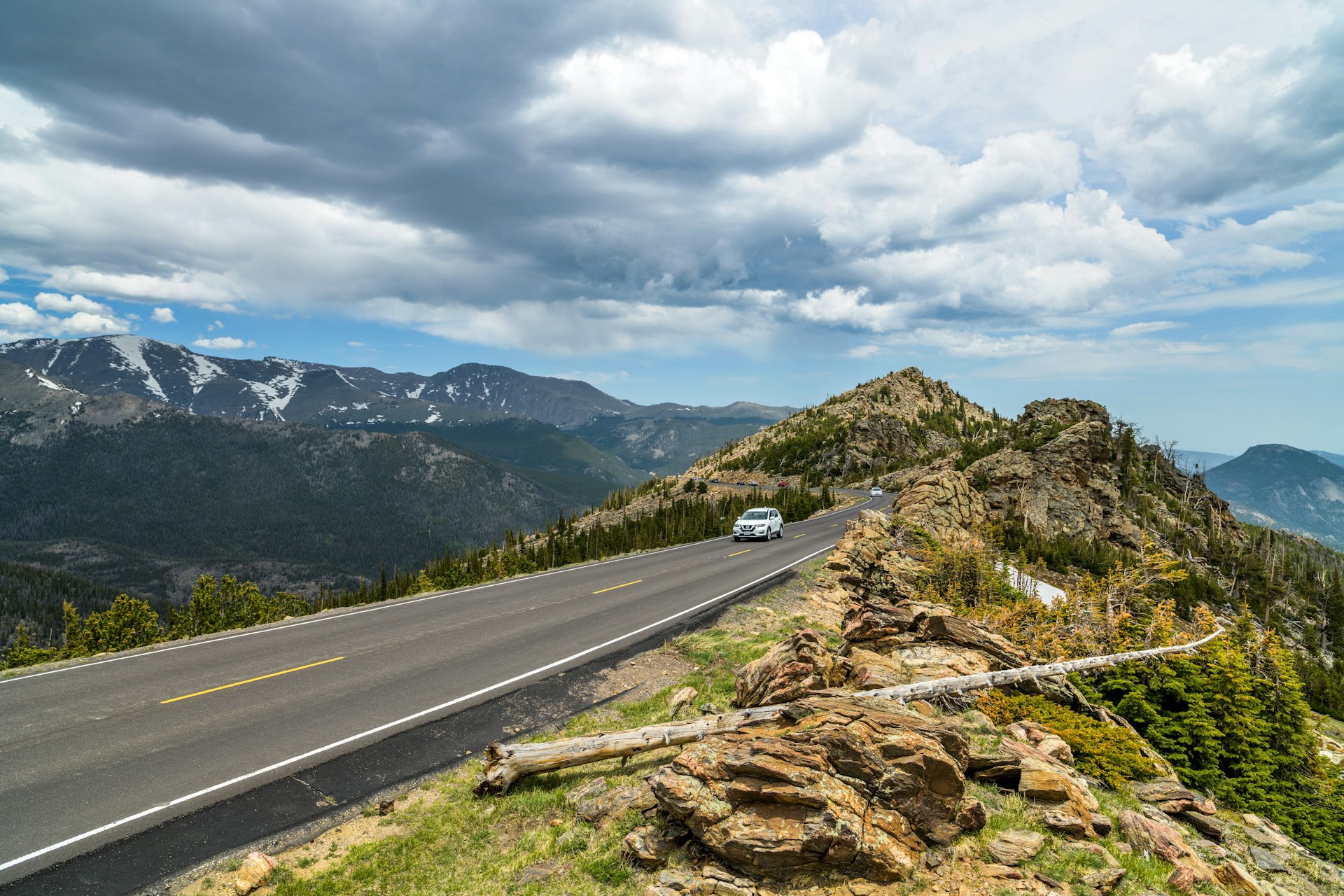 Cars driving Trail Ridge Road, Rocky Mountain National Park © Getty Images
Cars driving Trail Ridge Road, Rocky Mountain National Park © Getty Images
How to visit Rocky Mountain National Park
Rocky Mountain National Park has four entrances: three on the east side near Estes Park and one on the west side just outside Grand Lake. Both towns are charming, with a wide array of accommodations, restaurants and services. Within the park, there are five campgrounds; two are first come first served, the rest can be reserved in advance (book early, especially during the summer).
Backcountry camping also is allowed with a permit ($30, bear bin required). Park entrance fees for private vehicles (including passengers) are $30 per day, $35 per seven days; for motorcycles (including passengers) $25 per day, $30 for seven days; and for individuals $15 per day. Children age 15 and under enter free. Annual passes cost $80.
From Acadia to Zion: A complete guide to all 63 national parks in the United States
 Inside a
Inside a
Learn about Indigenous cultures at Mesa Verde National Park
Mesa Verde National Park is truly a one-of-a-kind place, the largest and best-preserved Indigenous American archaeological site in the US, with stunning landscapes of canyons and mesas. Located near the Four Corners region and spanning 81 sq miles, this Unesco World Heritage site is home to over 5000 Ancestral Puebloan sites inhabited from 550 CE to 1300 CE. Today, what remains is a wonderland for adventurers of all sizes, who can clamber down ladders to elaborate cliff dwellings, see rock art and delve into the mysteries of the first Americans.
Though there are several hikes in the park, taking ranger-led tours is the most rewarding way to visit Mesa Verde. These uniformed experts provide an in-depth history of Mesa Verde and a paint picture of ancient life while retracing the steps of Ancestral Puebloans. During the tour of Cliff Palace, for instance, visitors climb down a stone stairway and four 10ft ladders to enter the site, believed to be home to about 25 families; a grand engineering achievement, it has 150 rooms and 23 kivas (underground sacred spaces).
The 6 best hikes in Colorado for Rocky Mountain adventures
 Cliff dwellings at Mesa Verde National Park © Checubus / Shutterstock
Cliff dwellings at Mesa Verde National Park © Checubus / Shutterstock
Likewise, the tour of Balcony House requires visitors to descend a 100ft staircase into the canyon, climb a 32ft ladder, crawl through a 12ft tunnel to enter the dwelling, then climb an additional 60ft of ladders and uneven stone steps to get out. It is not for the faint of heart. But it is well worth the exertion for the panoramic views of Soda Canyon, 600ft below the sandstone overhang that once served as the ceiling for 35 to 40 rooms.
A complement – or alternative – to scrambling through the park’s cliff dwellings is a six-mile driving tour along the Mesa Top Loop Road. The road leads to 12 different archaeological sites (no teetering ladders on this route) as well as magnificent overlooks to cliff dwellings. A free audio tour, played on any smartphone, leads the way. Don’t miss the Chapin Mesa Museum, with fascinating exhibits and Ancestral Puebloan artifacts; the overview film provides a good introduction, too.
Top things to do in Colorado that are simply unmissable
How to visit Mesa Verde National Park
Within the national park, visitors can stay in the tasteful Far View Lodge or car camp at Morefield Campground, just steps from the park’s general store and gas station. Mesa Verde also makes for an easy day trip from Cortez (10 mi) or Mancos (7 mi), both appealing towns with plenty of services. From May to October, park admission costs $15 per individual (age 15 and younger are free), $25 per motorcycle (including the riders) and $30 per non-commercial vehicle (including all occupants); from November to April, entrance is $5 to $10 cheaper. An annual pass is $55. Tickets for ranger-led tours range from $8 to $25 and can be reserved 14 days in advance; book early to assure a spot.
 Sand dunes and mountainous peaks at the Great Sand Dune National Park, Colorado © Dan Ballard / Getty Images
Sand dunes and mountainous peaks at the Great Sand Dune National Park, Colorado © Dan Ballard / Getty Images
Go sand sledding at Great Sand Dunes National Park
In a state better known for its snowy peaks and mountain passes, Great Sand Dunes National Park appears like a surreal work of art in southern Colorado, an undulating sea of sand bounded by jagged peaks and scrubby plains. The park is home to a wide range of ecosystems and landscapes, but its massive dune field – covering over 30 sq miles – is the star attraction.
There are no trails through this otherworldly sandscape, so the hiking possibilities are endless. But be warned: it’s not easy. The dunes are hundreds of feet tall and trudging up them feels like taking a half-step back for every one step forward. (Not to mention they start at an altitude of 7200ft; bring plenty of water.) But it’s well worth the effort.
Two informal hikes guarantee excellent panoramic views, making them especially popular. The first is to High Dune, which departs from a parking area just beyond the visitor center. It’s about 2.5 miles to the “peak” and back. If you’re up for it, continue west to Star Dune: at 755ft high, it’s the tallest sand dune in North America.
Million dollar views for nothing: the best free things to do in Colorado
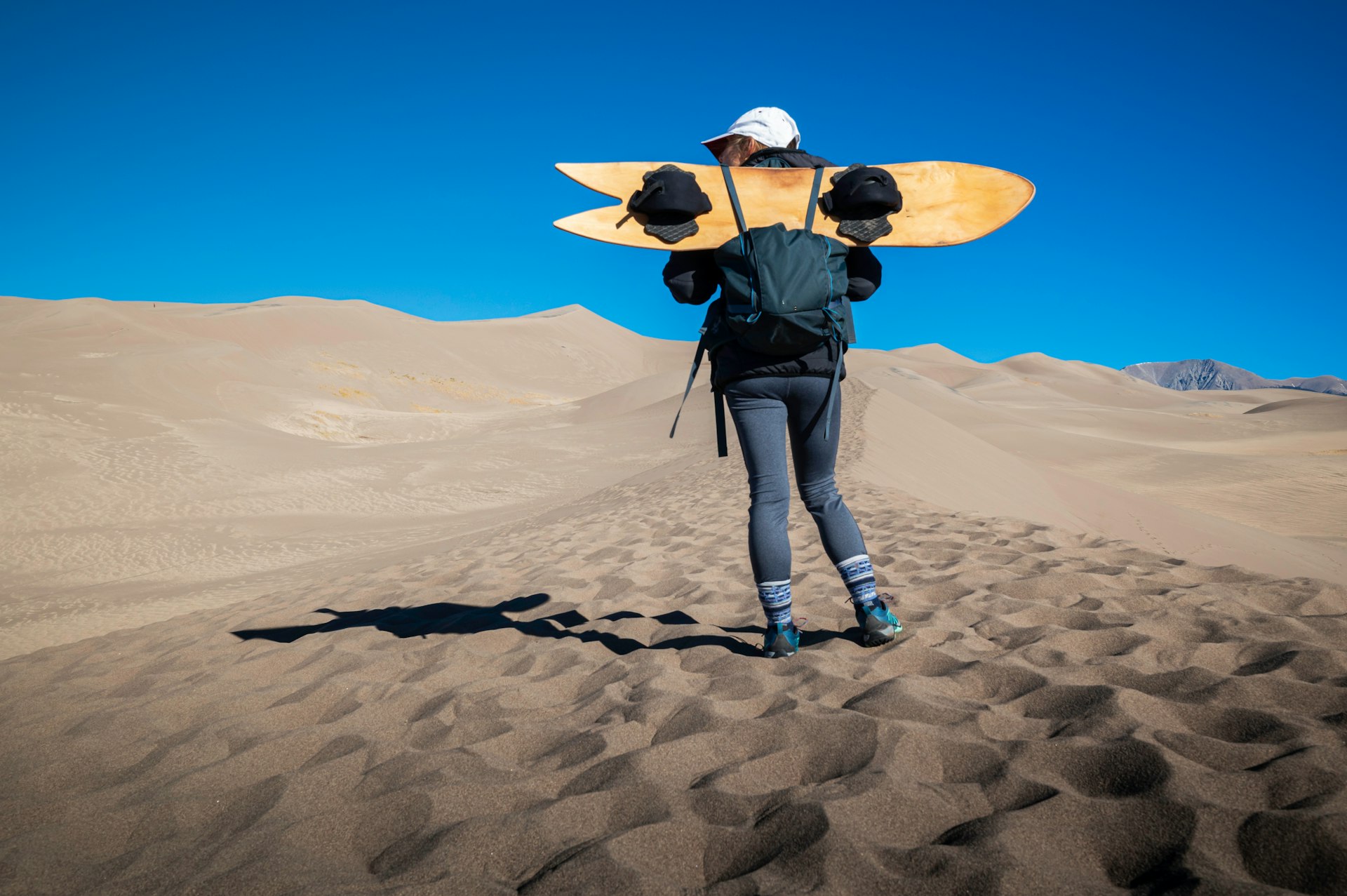 Carrying a board may seem like a bad idea when you’re trudging up the dunes, but the gleeful rush down the sandy slopes is worth every step © David Spates / Shutterstock
Carrying a board may seem like a bad idea when you’re trudging up the dunes, but the gleeful rush down the sandy slopes is worth every step © David Spates / Shutterstock
For the young – and those willing to take a few spills – sand sledding and sandboarding are an exhilarating way to zip down the towering slopes. Special wood sleds make for the best rides, especially when they’re waxed. Rentals are available from Kristi Mountain Sports in Alamosa or the Great Sand Dunes Oasis just outside the park.
In spring, snowmelt from the nearby Sangre de Cristo Mountains creates the Medano Creek, which appears like an oasis along the eastern edge of the dune field. Peak flow is usually in late May or early June, when the rippling water flows in small waves over the sandy floor, creating a seasonal beach that’s ideal for wading, splashing, even skim-boarding and inner-tubing, alongside the majestic dunes.
Colorado on a budget
How to visit Great Sand Dunes National Park
Camping is available in the park at the Piñon Flats Campground; reserve early, especially if visiting when the Medano Creek is flowing. For those looking to get away from the crowds, backcountry camping permits are available year-round for $6. For day-trippers, the nearest towns are Mosca (23 miles) and Alamosa (33 miles), though the latter offers many more (and better) overnight and eating options. Entrance fees to the park are valid for seven days and cost $15 per individual (age 15 and younger are free), $20 per motorcycle (including the riders) and $25 per non-commercial vehicle (including all occupants); an annual family pass runs $45.
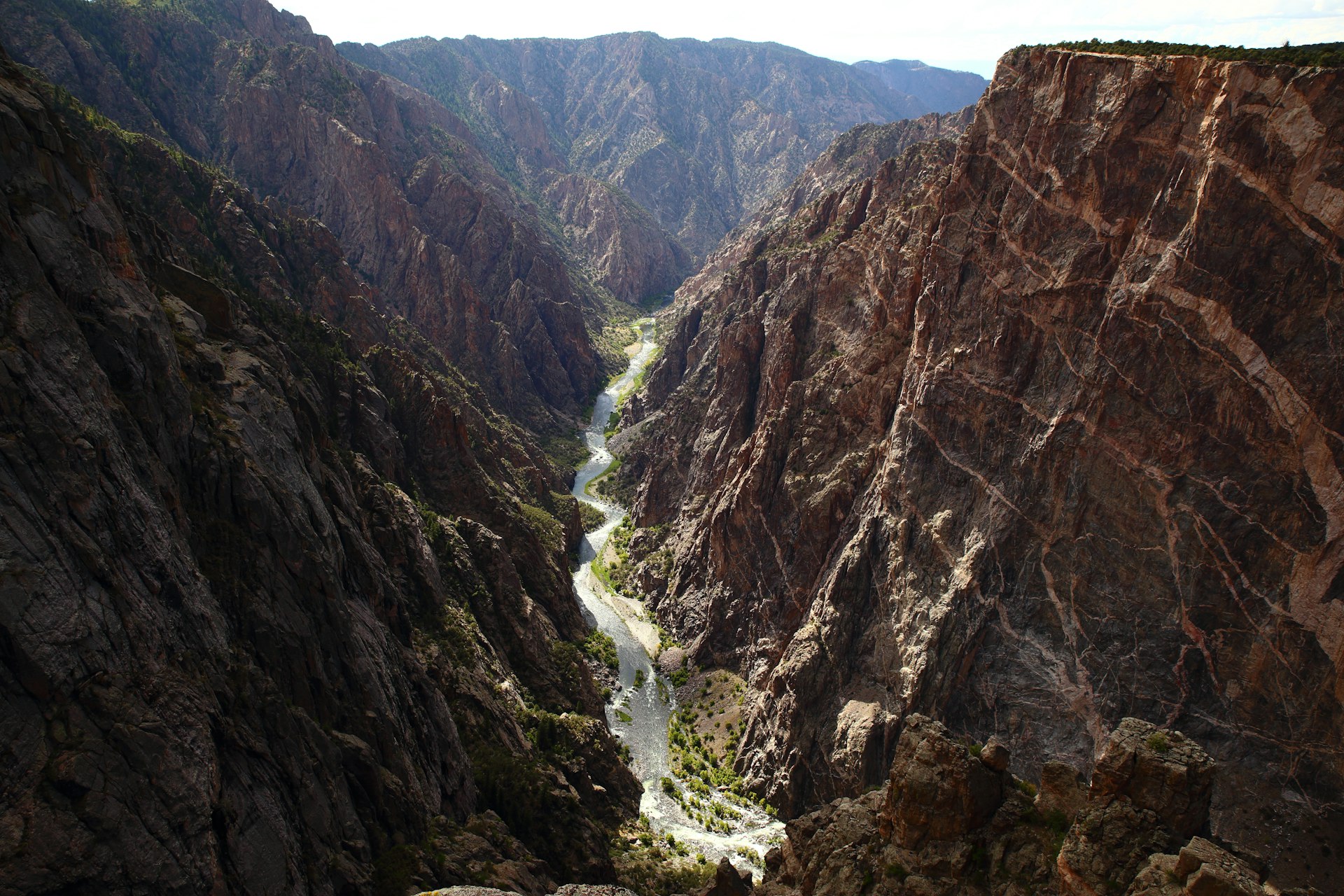 Black Canyon of the Gunnison is easy to explore by day and a dark sky park at night © corlaffra / Shutterstock
Black Canyon of the Gunnison is easy to explore by day and a dark sky park at night © corlaffra / Shutterstock
Gasp at the views at Black Canyon of the Gunnison National Park
Steep, narrow and utterly spectacular, the Black Canyon of the Gunnison National Park is a massive 2700ft-deep gash in the earth, etched out over millions of years by the Gunnison River and volcanic uplift. From rocky rim to fast-moving river, no other canyon in the country combines the narrow openings, sheer walls and dizzying depths of the Black Canyon.
The park offers breathtaking views, challenging hikes and myriad climbs; no matter how you experience it, you’re sure to leave with a sense of awe (and a little vertigo).
The national park is split in two – the South and North Rim – by the canyon; no bridge or road unites the sides. Most visitors head to the south side, which is popular for the South Rim Road, a 6-mile paved road that winds its way to 11 spectacular overlooks at the edge of the canyon, some reached via short trails.
 Black Canyon of the Gunnison National Park, Colorado © Patrick Lienin / Getty Images
Black Canyon of the Gunnison National Park, Colorado © Patrick Lienin / Getty Images
Three demanding hikes from the South Rim snake down the canyon to the river bottom; unmarked and often punishing, the hikes are awe-inspiring but recommended only for experienced (and very fit) hikers.
Across the river, a dirt road leads to the North Rim entrance. Best known for rock climbing, it has over 100 climbing routes; all are multi-pitch, traditional routes located in remote areas of the canyon. Offering adventure climbing at its best, the north side includes Colorado’s tallest vertical cliff face, Painted Wall (2250ft), named for its fabulous marble stripes.
Things you need to know to have a great time in Colorado
How to visit Black Canyon of the Gunnison National Park
For South Rim, the nearest city is Montrose; just 12 miles away, it’s a good base for day-trippers. For visitors headed to the North Rim (closed in the winter), the community of Crawford (13 miles away) has basic services. For camping, the park has two campgrounds, one on each rim. Since both fill up quickly, especially during the summer, be sure to reserve a spot in advance. At the bottom of the canyon, along the Gunnison River there’s also the East Portal Campground; it’s only accessible from the South Rim, though it’s technically a part of the adjacent Curecanti National Recreation Area.
Entrance fees to the national park are good for seven days and cost $15 for individuals (age 15 and younger are free), $25 for motorcycles (including the riders) and $30 per vehicle (including all occupants); an annual pass is $55. Backcountry permits (free) are required to rock climb and to hike to the river bottom.

